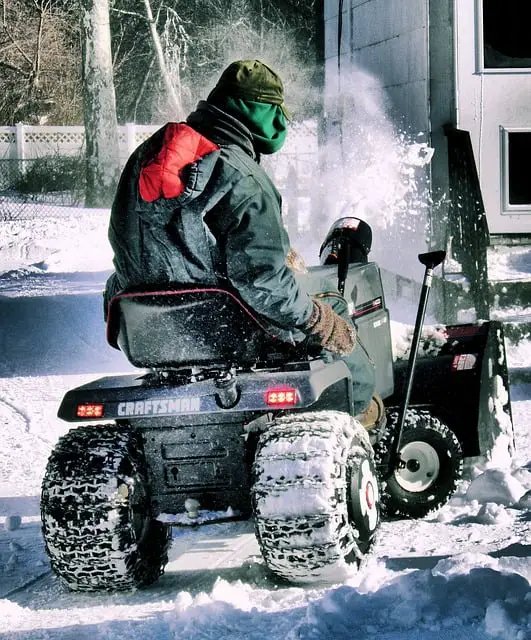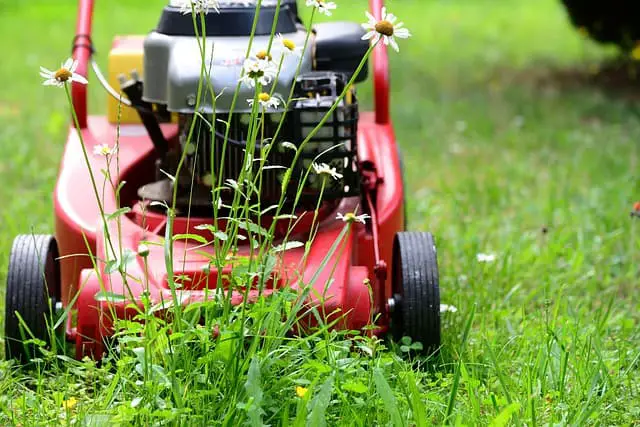Hydrostatic transmissions provide a much smoother riding experience than automatic transmissions. They also require a lot less in the way of maintenance.
While hydrostatic transmissions do have their downsides, the vast majority of people that use hydrostatic transmissions will tend to prefer them over automatic offerings.
How is hydrostatic and automatic transmission different?
The difference is in the way in which the transmission provides power from the engines to the wheels. A hydrostatic transmission will do so through the use of fluids, while automatic transmissions will have belts that carry out the work.
The way in which they feel is completely different, although they both end up turning the wheels.
Do all riding mowers have hydrostatic transmission nowadays?
No. Hydrostatic transmission can be incredibly expensive, and this means that only a few riding mowers will have hydrostatic transmissions on them. The bulk of what you can purchase will be an automatic transmission.
If a riding mower uses hydrostatic transmission, then this will be clearly detailed in the specifications for the mower.
Which companies make the best hydrostatic riding mowers?
While there are many companies that produce quality hydrostatic riding mowers, the vast majority of people seem to believe that it is John Deere that produces the absolute best options on the market.
Of course, you do have to remember that John Deere riding mowers are going to be some of the most expensive riding mowers that you can purchase.
Are hydrostatic mowers more expensive to buy?
Yes. Because the technology is fairly new, it currently does not have economies of scale. This means that hydrostatic transmissions tend to be much more expensive.
That being said, the longer lifespan for hydrostatic transmissions and the lower amount of required maintenance helps to make more savings in the long term.
What is the main disadvantage of a hydrostatic transmission?
The main disadvantage will be the sensitivity of the hydrostatic transmission. If you have a hydrostatic transmission, then you have to remember that the riding mower will behave slightly differently.
On a hydrostatic transmission, you may find that the riding mower is much more sensitive. This means that you will need to adjust the way in which you are riding the mower.
Is hydrostatic or automatic transmission more fuel-efficient?
Automatic transmissions are much more fuel-efficient. In their current state, hydrostatic transmissions consume a lot of gas.
This means that, in the short term, it is probably going to be much more expensive to run a hydrostatic transmission. The real savings will happen when it comes to the maintenance and lifespan of your riding mower.
Why do hydrostatic transmissions require less maintenance?
Hydrostatic transmissions require less maintenance as there are no belts to break. The fluid is in a sealed unit, and it is rare that it is going to be leaking out.
Basically, a hydrostatic transmission has fewer moving parts, and this means that there are fewer weak points in the system, and thus less parts that can end up going wrong.
How often should you replace the fluid on a hydrostatic transmission?
This will be dependent on the hydrostatic transmission and the mower. When you purchase a vehicle that uses a hydrostatic transmission, there will be information inside of the user manual that tells you about maintenance.
In most cases, you probably won’t be replacing the fluid more than once every few years. Those using a mower for commercial purposes may need to replace more frequently than that.
Can you replace the fluid on a hydrostatic transmission yourself?
Yes. This is a job that you can easily perform yourself, even if you do not have access to the largest selection of tools.
How long will a hydrostatic transmission last?
A hydrostatic transmission, even a cheap one, can easily last between 3,000 and 5,000 hours. Although, you will need to be carrying out regular maintenance in that time.
How long will an automatic transmission last?
A good automatic transmission may cap out at 3,000 to 4,000 hours. This will involve regular maintenance to hit that point.
Where can you get a hydrostatic transmission repaired?
You should always head to an authorized repair agent for the mower that you own. These will be the only people that can repair your mower to a professional standard.
You will be able to find a complete list of repair agents for your mower or tractor on the manufacturer’s website.
Where can you purchase fluids for a hydrostatic transmission?
You can purchase them online or from authorized resellers. Do bear in mind that you should only ever be using the right fluid for your transmission.
If you use a third-party fluid, then there is a good chance that you will be shortening the lifespan of your hydrostatic transmission.
Is it worth buying a hydrostatic transmission?
If you have the cash, then yes. The massive increase in lifespan for a hydrostatic transmission means that it is going to be more than worth paying the asking price.
Do bear in mind that hydrostatic transmissions work a little bit differently, so it could be more difficult to use if you aren’t used to riding them. It is something that you will quickly get a feel for, though.
Is it bad when a hydrostatic transmission makes a whining sound?
No. This is just air getting mixed up with the fluid inside of the hydrostatic transmission. It is not a problem, and it is something that is always going to happen no matter which mower or tractor you own.
Do you need to know how to use a clutch or change gears if you use a hydrostatic transmission?
No. There are no gears in a hydrostatic transmission. This means that you do not have to worry about changing gears at all.
Hydrostatic transmissions are fully automatic and will adjust based upon the situation that you are in.
Can you use automatic transmission fluid in a hydrostatic transmission?
No. They are completely different. If you do this, then you run the risk of destroying the hydrostatic transmission.
Hi, I’m John Stephens, chief editor and writer for Totalgardener.com. I’ve been gardening and raising animals for over 15 years starting with a small backyard plot in Northern Virginia where I grew corn, potatoes, squash, and using a high mulch technique called the Ruth Stout Method. I also raised ducks and small mammals for meat and eggs in a movable pen similar to the ones used by Joel Salatin. I later moved to Colorado where I experimented with growing greens using aquaponics inside. I eventually added a microgreens setup and home sprouting operation. I’m excited to share everything I’ve learned plus more from the other local gardening and animal raising experts I know.



